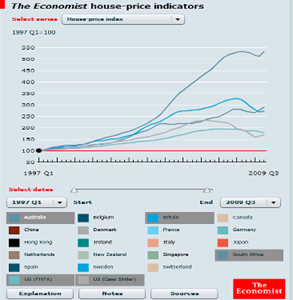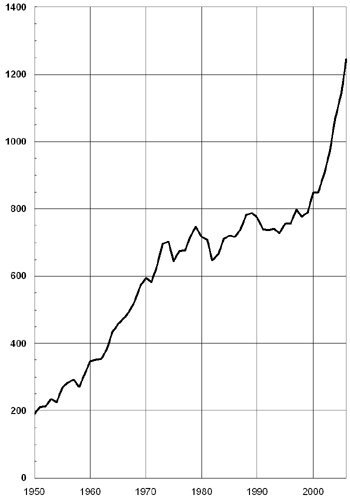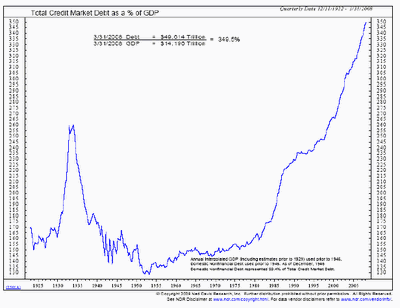In a previous post I explained my belief about relativity in expectations. That is what makes markets and is the causes of different opinions. I explained how many make the common mistake ( and completely natural human tendency) of comparing to the most recent data available or last experiences they were exposed to (the contrast principle). This is in my view reflected in the current S&P earnings expectations and hence the market consensus of judging whether the current market is expensive or not on a historic P/E ratio.
As of today’s date, according to S&P, the trailing 12 month P/E for reported earnings till end June 2008 is 24.77 . Looking forward the consesus estimate for the next 12 month’s earnings is a P/E of 18.97 . Now if you compare this trailing 12 month P/E ratio to recent years, it does not look too expensive, the average P/E ratio for the past 10 years has been 27. Looking back longer though, since 1871, the average P/E ratio has been 15, and that includes this last 10 years of abnormally high P/E ratios.
For years, John Y. Campbell and Robert J. Shiller have been calculating long-term P/E ratios. According to their data, the 10 year average of earnings for the S&P is 55.5 . Putting a “normal” long term average P/E ratio on top of that, and you get a S&P index value of around 830, compared to yesterday’s close of 1005. Now, consider that we are in the worst financial and credit crises since the Great Depression and the highest levels of household credit in the history of mankind, and that normally during such stock market “corrections” the P/E ratio declines to levels far below average levels, what realistic expectations can one expect ?
On the earnings side, my view has been that analysts are still way too optimistic in their earnings forecasts for the next 12 months, forecasting a earnings level of 54 for the S&P 500, that is only down 20% on last years earnings. Now consider that Toyota this morning came out and slashed their earnings forecast for next year, 55% below consensus estimates!
For the year to end-March, Toyota now expects operating profit of 600 billion yen ($6.1 billion) versus a previous forecast of 1.6 trillion yen. A poll of 17 brokerages had forecast 1.34 trillion yen.
Looking at the performance of long term P/E ratio’s, the work of Shiller and Campbell, beautifully illustrated in this article of the NY Times, and the graph here, sugggests that during a crises of this magnitude, P/E ratio’s can come down, and have consistently done so, to levels of below 10, and extremes of 5 in early 1920’s, about 6 during 1930’s and around 7 during the 1980’s. Now lets take an average of the lowest 3, and a P/E of 10, and we get a realistic possibilty of a P/E ratio of 8 at the bottom of the current stock market correction. That would imply a S&P 500 index level of 440 compared to a “normalized” current 10 year average S&P earnings of $55. That is more than 50% below the current level!
These facts make it very difficult for me to become bullish on stocks in general for the foreseable future. I will continue to be biased on the short side, but be prepared to trade short term oppertunities on the long side. Strict stop levels have to be adhered to however and the size of trades have to take into consideration that we still are in a very volatile bear market, and may be so for a long time still.



